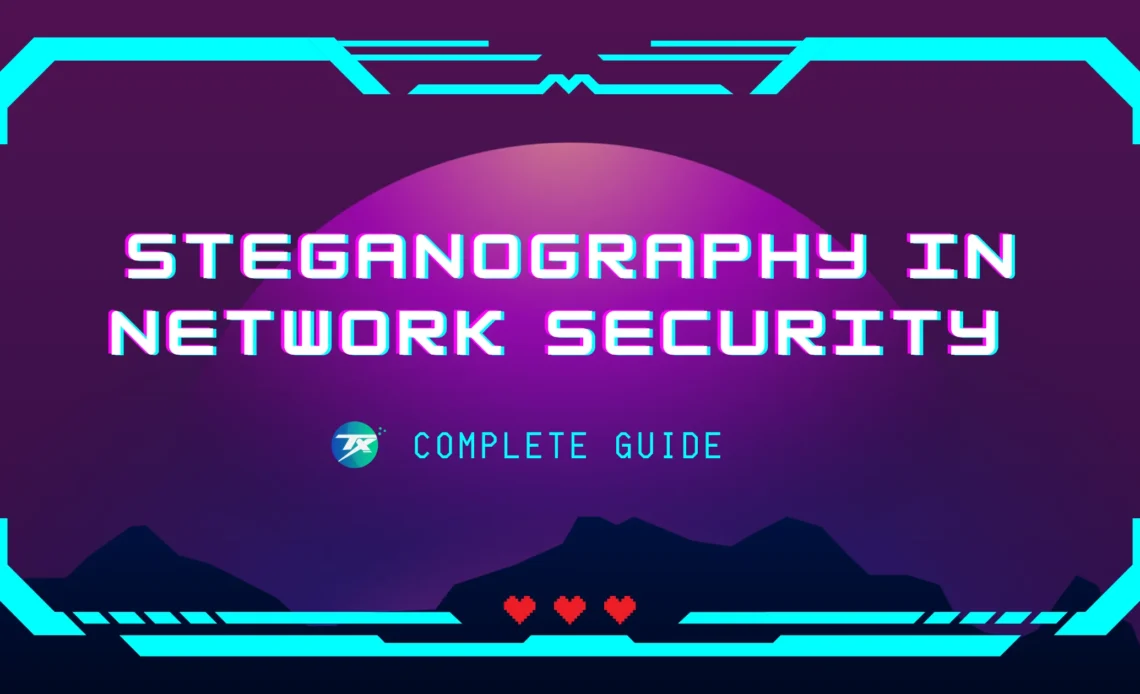
Steganography can be divided into different types based on the nature of the cover object in which secret data is embedded. The five types of steganography are image steganography, audio steganography, video steganography, text steganography, and network steganography. Steganographic techniques involve hiding sensitive information within an ordinary, non-secret file or message to avoid detection. There are different types of cover objects used in steganography such as cover-image and stego-image. Existing image steganography schemes can be classified into four categories: exploiting the image format, in the image domain, in the transform domain, and in hybrid approaches. Different security and data hiding techniques such as LSB (Least Significant Bit), ISB (Inverted Significant Bit), and MLSB (Modified Least Significant Bit) are used to implement steganography. Read more about the benefits and applications of Steganography in Network security.
How Steganography Works
Steganography is the technique of hiding secret data within an ordinary, non-secret file or message to avoid detection. The secret data is then extracted at its destination. Steganography works by concealing information in a way that doesn’t arouse suspicion, making it harder for attackers to detect and intercept sensitive information. One of the most popular techniques used in steganography is “least significant bit” (LSB), which involves replacing the least significant bits of a pixel with hidden data. Steganography can be combined with encryption as an extra step for hiding or protecting data. It makes use of ordinary files like text, audio, images, and video to hide messages in plain sight.
Detecting Steganography
Steganalysis is a technology that tries to defeat steganography by detecting hidden data and extracting or destroying it. There are several techniques used for detecting steganography, including visual analysis methods that attempt to detect the presence of steganography through visual inspection, either with the naked eye or with the assistance of automated tools. Investigators can use the LB modification technique to detect audio steganographic files by scanning for high and inaudible frequencies. StegAlyzerAS is a tool created by Backbone Security that can detect steganography on a system by searching for known stego artifacts as well as by analyzing file headers and footers. The easiest way for a SOC to detect steganography is to invest in an email security or data-loss prevention tool with such capabilities. There are several steganography tools are there to hide the data from the files, a few of them are Steaghide, Outguess, F5, and more.
Read More: CentralOps Complete Guide 2023
How does Steganography Differ from Network Encryption?
The main difference between steganography and encryption is that steganography hides the traces of communication while encryption alters the structure of the data while encrypting. Steganography conceals the existence of a message by hiding it within another message, making it difficult for an attacker to detect that a secret message is being transmitted. On the other hand, encryption transforms the original message into an unreadable format using mathematical algorithms to protect its confidentiality. While both techniques are used to secure data, steganography focuses on hiding information in plain sight, whereas encryption focuses on transforming information into an unreadable format.
Read More: Best Network Security Companies in the World
The Benefits of Steganography in Network Security
Steganography has several benefits in network security. One of the primary advantages is that it helps obscure the fact that sensitive data is hidden in a file or other content carrying the hidden text, making it harder for attackers to detect and intercept. Unlike encryption, steganography does not draw attention to itself, which can be useful in situations where encryption alone may not be enough to protect sensitive information. Steganography can also be used to conceal and deceive, making it a form of covert communication that involves any medium to hide data.
Steganography can allow sensitive data to be transmitted securely without revealing that secret information is exchanged. Steganography can be used along with encryption techniques to secure the data and, the transmission can be done by using an image as a carrier of data through the network. Steganography conceals information that avoids suspicion, making it harder for attackers to detect and intercept sensitive information. However, steganography alone may not guarantee total protection, and it can be used in combination with other security measures, such as encryption. If keeping information secure and inaccessible to unauthorized parties is of utmost importance, steganography is a useful tool for network security.
- Enhanced security: Steganography provides an extra layer of security for sensitive data transmission by hiding the data in plain sight within a carrier medium. This makes it difficult for unauthorized users to detect and extract hidden data, thus enhancing the overall security of the network.
- Increased confidentiality: By concealing the data within a carrier medium, steganography ensures that only authorized recipients can access the information. This prevents unauthorized access to confidential data and reduces the risk of data leaks and breaches.
- Reduced detection: Steganography makes it difficult for attackers to detect hidden data, reducing the risk of detection and increasing the chances of successful data transmission through the network.
- Cost-effective: Compared to other encryption techniques, steganography is a cost-effective method of securing data transmission. It does not require expensive software or hardware, making it accessible to a wide range of organizations and individuals.
- Increased capacity: Steganography allows large amounts of data to be hidden within a single carrier medium, increasing the amount of information that can be securely transmitted.
- Protection against attacks: Steganography is used to protect against various types of attacks, such as man-in-the-middle attacks, eavesdropping, and interception.




